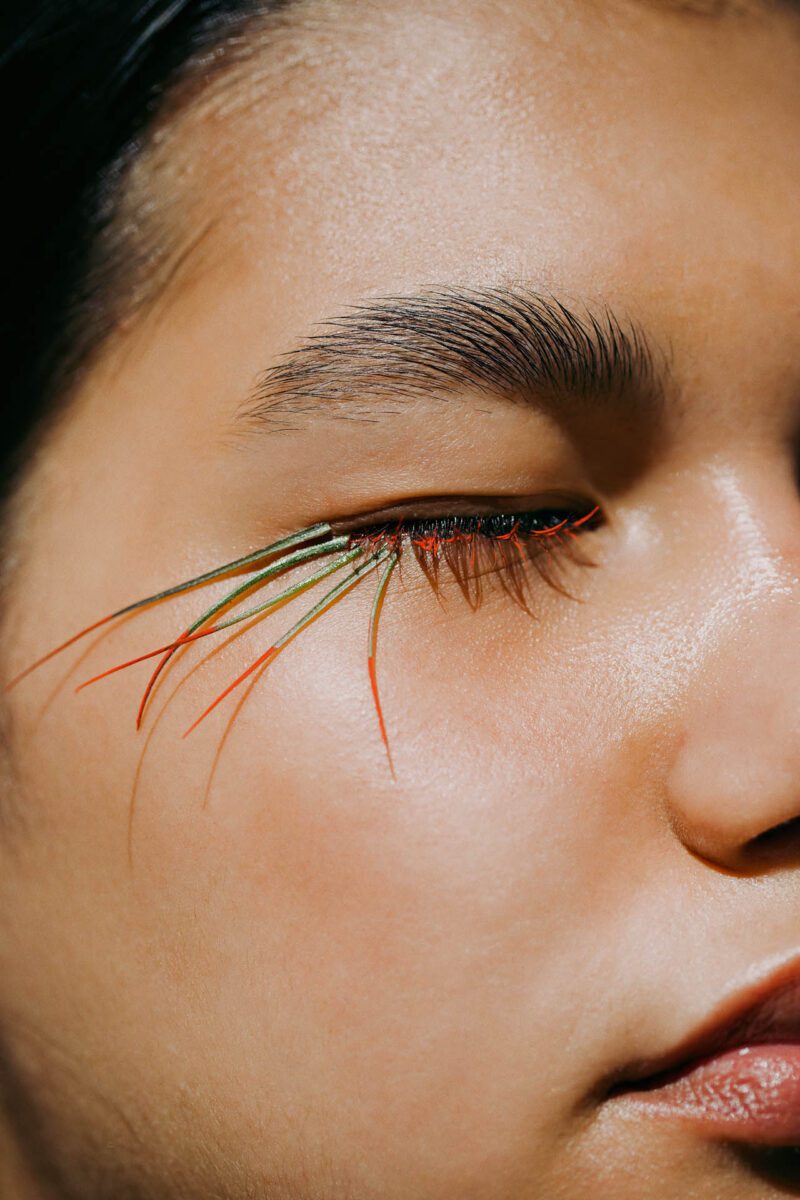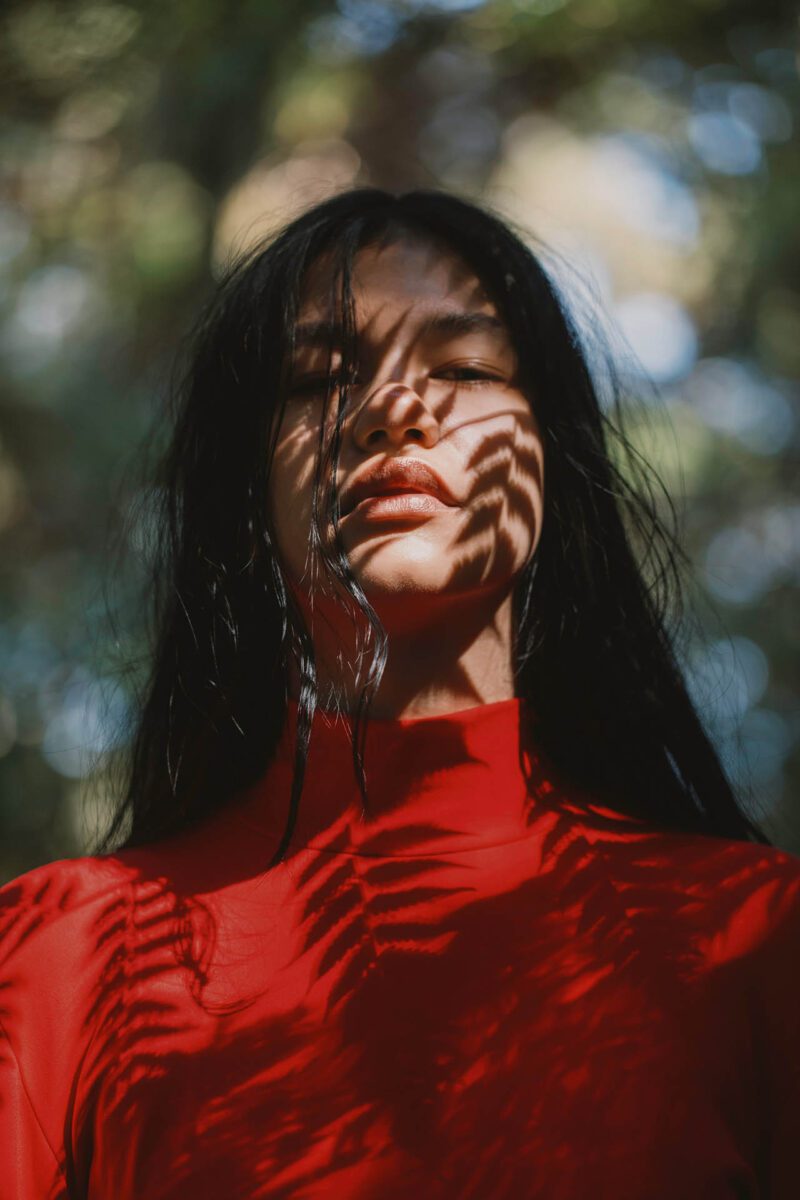The definition of “fashion photography” has undergone a radical shift in recent years, shedding its traditional associations with consumerism and conventional beauty standards to become more aligned with activism and social change. After all, fashion is full of political and cultural meaning. It speaks to, and shapes, modern ideas of identity, gender, class, sexuality and body image, and plays an important role in the way we present our ideas and values to the world. Fashion photography has become an exciting genre that straddles multiple disciplines – tapping into the visual language of conceptualism, surrealism and documentary, amongst others. It’s less about the product, and more about the story.
Vogue is a powerhouse and one of the biggest names in the industry. PhotoVogue Festival has been at the forefront of this shift since 2016. Its programming focuses on prescient subjects and is dedicated to creating “an inclusive and diverse space where all kinds of aesthetics are accepted and cherished.” Its most recent edition, which took place in 2023, centred on the theme What Makes Us Human? Image in the Age of AI, addressing the staggering development of artificial intelligence and its complex relationship to human creativity.
Now, the ninth edition of the festival is titled The Tree of Life: A Love Letter to Nature, dedicated to the intricate connections between human, animal and plant life. Forty-five artists have been selected from a global open call, which received over 44,000 submissions. Works by Alex Valentina, Delali Ayivi, Imraan Christian, Ioanna Sakellaraki, Wang Wei and more will form the main exhibition at BASE Milano – the centrepiece of a wider talks and events programme over four packed days.
Brazilian photographer Gleeson Paulino (b. 1988) is part of this year’s line up. Paulino was born in Eldorado, a small city of 16,000 in Mato Grosso do Sul – a state renowned for its nature and biodiversity – but left for Vienna at 17 through a music study programme for young people in his religious community. The journey to Europe eventually led him to London, where he began his career as a photographer, and developed a signature style defined by vibrant colour and natural light. Paulino returned to Brazil years later, and, in 2021, i-D Magazine – another key industry name – recognised him as one of the country’s leading image-makers.
Since then, Paulino has worked between São Paulo, London and Paris. He has gained widespread acclaim, especially for Batismo, a striking series of photographs that pays homage to his birthplace. The dreamlike collection chronicles Brazil’s people and biodiverse ecosystems, and has since been pub- lished as both a book and an exhibition. Ahead of Photo- Vogue, we caught up with Paulino, who is actively involved in restoring Brazil’s Atlantic Forest. His work continues to foreground Indigenous communities and the beauty of the land.

A: Can you recall an early experience with images?
GP: I’ve loved photography since I was a child. We didn’t have a TV at home, and when I was about five, during family visits to friends or relatives, I would always ask to see their photo albums. It became a sort of ritual for me. One of my earliest memories is of my grandparents. They had a jar filled with monocles in their living room – those old- fashioned devices that let you view photographs through a tiny, colourful object with a magnifying lens. I’d spend hours looking into them, creating stories in my head about the people in the images. That was my first real contact, and I believe it unconsciously inspired a desire to create my own.
A: You work across different genres: fashion, fine art, documentary and still life. Would you describe yourself as an “interdisciplinary” photographer? Is there a central theme or driving force that ties your oeuvre together?
GP: I started making pictures without the intention of becoming a photographer. I’ve always been drawn to capturing my daily life – whether that be my travels, small details, or the feelings that surround us. I follow my intuition, and that has guided me to where I am today. I guess that’s how I’ve naturally developed into an interdisciplinary image-maker.
A: In 2024, you made a series for Atmos Magazine in Brazil’s endangered Atlantic Forest. What inspired that?
GP: During the pandemic, my friends and I realised how unhealthy it was to remain confined to the city. This led us to seek outdoor spaces to reconnect and restore balance. I grew up close to nature, and always felt a deep connection to it. After years of urban living, I came to realise how much I missed that bond. Our journey brought us to a farm in the Mantiqueira region, once part of the Atlantic Forest but later transformed into a pine plantation. Here, we began restoring its biodiversity and creating a space for mindful living and creativity. The Atlantic Forest is an essential but often overlooked biome. Whilst the Amazon garners more attention, only 5% of the original Atlantic Forest remains. When I received the invitation from Atmos Magazine to do an editorial with the theme of symbiosis and inter- dependence, I felt that it resonated deeply with the vision.

A: What progress have you made on the farm so far?
GP: Located two and a half hours from São Paulo, the farm sits in one of Brazil’s most biodiverse regions. Currently, 45% of the property is protected forest, but our ultimate goal is to restore the remaining land, creating an inspiring, sustainable haven for creative and mindful living. The project is well underway, with several buildings completed and artists starting residencies that bring vibrant energy to the space. Additionally, we’re working with biologists and experts to reintroduce native species and convert the remaining pine plantations into thriving ecosystems. Our vision goes beyond restoration. We’re building a regenerative, collaborative and harmonious community where humans and nature thrive together. This includes eco-friendly construction, sharing knowledge about bio-construction, medicinal plants and sustainable practices.
A: You’ve also created extensive work in the Amazon. Can you tell us about your experience photographing there?
GP: The images marked the beginning of a journey to reconnect with my ancestry. One significant photograph, Al- vorada (“the first light of the morning”), depicts a girl in the Rio Negro’s dark waters, curled in a fetal-like pose symbolising rebirth. This image holds profound personal significance, as it was captured the day after my grandfather, who had Indigenous heritage, passed away. This moment was deeply emotional, representing personal, cultural and ancestral renewal, further strengthening my connection to the region. This experience inspired Brasa, a project focused on self-discovery, honouring roots and learning from native people. Travelling across Brazil, I explored how Indigenous communities coexist with the land, gaining invaluable cultural and ecological wisdom on sustainable living. This journey became both a personal exploration and a broader effort to reconnect with the natural world and its heritage.

A: What is the approach you take to making portraits?
GP: I like to create an environment where the person feels relaxed and can trust me. Building a bond is key. I have gentle conversations before we start, but when I photograph, I tend to stay quiet. I like silence – it helps people to feel at ease, and to enter the world I’m trying to create whilst shooting.
A: You’re also a master of still life – picking out details from the environment like leaves, seeds, feathers, or butterfly wings. How do you decide which to include?
GP: It’s an organic process: if I overthink it, it won’t work. When I’m photographing, I often see diptychs or small stories forming. By the end of a shoot, I know which images I’ll use.
A: Water seems to be of particular importance, especially in Batismo. What keeps you coming back to this motif?
GP: That series is especially meaningful. It taught me so much about my creative process and how vital intuition is to my work. The experience was deeply therapeutic, and it connected me with Brazil’s rich culture, my ancestry and our people. Water carries a lot of symbolism, especially where I grew up. I noticed how much fresh water was featured in the images, and that’s what led me to name the series. For me, it symbolised a new baptism, a journey of self-discovery in this vast country.

A: Your imagery has a sharpness but also a dreamlike quality. How do you achieve your “signature aesthetic”? Is there a particular piece of equipment you use?
GP: My process is very much about feeling. When I click the shutter, I can already sense if the image is right – it’s the magic of the moment. I don’t work too much on the files afterwards. I’m not attached to equipment and often use different cameras, even my iPhone sometimes. For me, it’s not about the gear; it’s about the emotion the image creates.
A: You are one of 45 photographers selected to exhibit in Milan at the PhotoVogue Festival 2025: The Tree of Life: A Love Letter to Nature. How does that feel?
GP: I feel incredibly grateful. I never imagined my photographs would lead me here. It’s a humbling experience, and I’m honoured to be part of it. I know quite a few of the artists, but I’ve also discovered many inspiring works through being involved. It’s amazing to see so much creativity and talent.
A: The industry is constantly evolving, especially with AI. How do you see your work developing in future?
GP: I like technology and I see AI as a tool to help execute creative visions. But I don’t feel it fits into my work because I aim to evoke emotion and sensitivity. AI can create stunning images, but it lacks that human touch. We’re living through a transitional period, but I think printed pictures and real, tangible images will always exist. In future, as we become more and more consumed by screens, I believe the act of creating and consuming physical images will become a real luxury. Cinema has always been a big inspiration to me, and my next project will be a movie.
PhotoVogue Festival BASE Milano | 6-9 March
vogue.com
Words: Eleanor Sutherland
Image credits:
1. Gleeson Paulino, I am I am I, Anavilhanas, AM, Brazil. From Batismo (2019).
2. Gleeson Paulino, Untitled, Camanducaia, MG, Brazil. From Atmos Magazine, (2023). Styling: Marcell Maia. Beauty: Branca Moura.
3. Gleeson Paulino, Untitled, Camanducaia, MG, Brazil. From Atmos Magazine, (2023). Styling: Marcell Maia. Beauty: Branca Moura.
4. Gleeson Paulino, Untitled, Manaus, AM, Brazil. From Brasa (2019).
5. Gleeson Paulino, Dawn, Rio Negro, AM, Brazil. From Batismo (2019).





